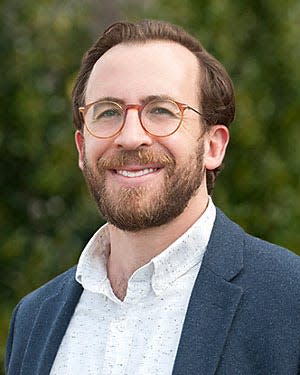D.O. vs. M.D.: What’s the difference?
Most people are familiar with physicians having “M.D.” after their name. But some physicians have “D.O.” as part of their title instead. So, what’s the difference between a D.O. (Doctor of Osteopathic Medicine) and an M.D. (Doctor of Medicine)?
What type of training do D.O.s and M.D.s complete?
Both a D.O. and an M.D. have attended medical school and are medical doctors. What varies is how they are trained. Currently, about 25% of medical students pursue D.O. degrees.
D.O.s and M.D.s can pursue careers in primary care (such as family medicine or internal medicine) or a specialty (like oncology, urology or general surgery).
Both types of doctors must complete a four-year undergraduate degree followed by a four-year degree at a college of osteopathic medicine or medical school. Once they’ve finished their medical degree, they must complete an internship and residency (on-the-job training). After residency, they may pursue a fellowship to gain more training in a specialty area.
M.D.s and D.O.s must pass a licensing exam to practice medicine.
What is the difference between a D.O. and M.D.?
M.D.s are considered allopathic doctors. They are trained to treat and diagnose medical conditions using conventional tools like prescription medications, X-rays and surgery. Generally, M.D.s take a targeted approach to treatment by reviewing symptoms, making a diagnosis and prescribing treatment according to that diagnosis.
D.O.s also use traditional medicine techniques to diagnose and treat their patients. But they focus heavily on prevention and a holistic approach to health. This means they see the body as integrated. For example, if you see a D.O. for stomach pain, they may look into what’s causing the pain and how to prevent it, in addition to treating your symptoms.
Osteopathic doctors are taught that many diseases stem from or cause symptoms within the body’s musculoskeletal system (including the bones, muscles and nerves). Because of this, they are trained to perform physical manipulations and adjustments to treat symptoms and diseases. These methods (called osteopathic manipulative treatment or OMT) are designed to relieve strained muscles, back pain, neck pain and other conditions.
Both MDs and DOs are trained to treat and diagnose medical conditions using conventional tools like x-rays, surgery and prescriptions. DOs are trained with the understanding that structure and function are interrelated. In addition to traditional techniques, DOs get additional training in osteopathic manipulative treatment which can help to diagnose and treat a variety of issues.
The difference between osteopathic doctors and naturopathic practitioners
It’s important to note that osteopathic doctors (D.O.s) are different from naturopathic practitioners. Naturopathic practitioners (also called naturopaths) use natural remedies to treat health conditions. Naturopaths complete four years of graduate education, but they aren’t licensed to practice medicine.
Naturopaths focus on healing the body through lifestyle changes, stress management, food, herbs and water. While a D.O. may also suggest these lifestyle changes, they are licensed to prescribe medication, perform surgery or perform manipulations.
What to expect when you see a D.O.
When you see a D.O., the exam may not be that different from one with an M.D. But they may focus more on your holistic health, prevention and manipulations.
Both types of physicians are trained to give you outstanding care. If you have questions about your health, talk to your primary care provider. To find a provider near you, visit www.pardeehospital.org.
Dr. Jesse Pace is a board-certified family medicine physician at Pardee Family Medicine Associates Asheville.

This article originally appeared on Hendersonville Times-News: Health advice: D.O. vs. M.D.: What’s the difference? A doctor explains
